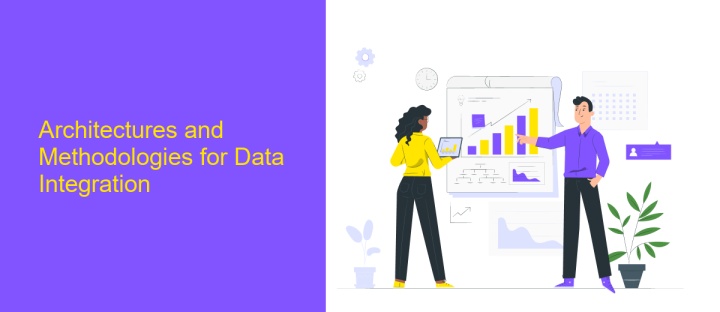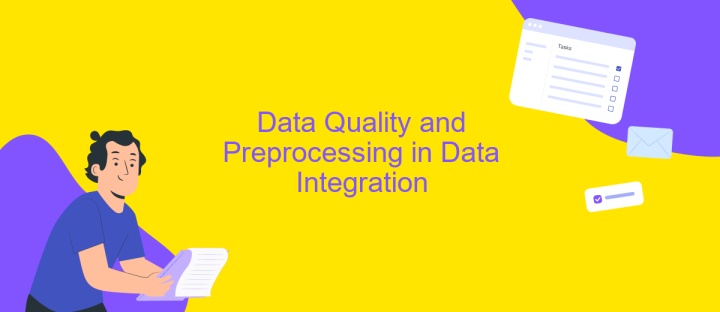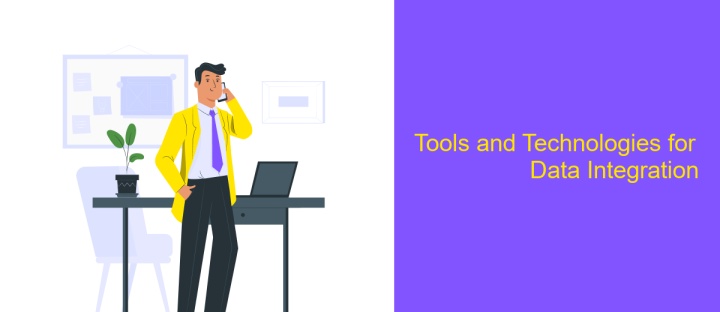Architecture of Data Integration in Data Mining
Data integration is a crucial component in the field of data mining, serving as the backbone for effective data analysis and decision-making. It involves the process of combining data from various sources to provide a unified view, enabling more accurate and comprehensive insights. This article explores the architecture of data integration, highlighting its importance, key components, and the challenges faced in creating a seamless data ecosystem.
Introduction to Data Integration in Data Mining
Data integration in data mining is a critical process that involves combining data from various sources to provide a unified view. This integration is essential for generating meaningful insights and supporting decision-making processes. As organizations accumulate vast amounts of data from disparate systems, the challenge lies in merging these datasets efficiently and accurately. Effective data integration ensures consistency, reduces redundancy, and enhances the quality of the data used in mining processes.
- Data cleaning: Removing inaccuracies and inconsistencies from datasets.
- Schema integration: Aligning data from different sources into a cohesive structure.
- Data transformation: Converting data into a suitable format for analysis.
- Entity resolution: Identifying and merging records that refer to the same entity.
By addressing these components, data integration facilitates a seamless flow of information, enabling data mining algorithms to perform more effectively. As a result, organizations can uncover hidden patterns, trends, and correlations within their data, driving strategic decisions and fostering innovation. The success of data mining heavily relies on the robustness of the data integration process, making it a fundamental aspect of modern data management strategies.
Architectures and Methodologies for Data Integration

In the realm of data mining, effective data integration is crucial for synthesizing disparate data sources into a cohesive framework. Architectures for data integration commonly involve centralized, federated, or hybrid models. Centralized architectures consolidate data into a single repository, enhancing consistency and control, whereas federated systems allow data to remain at the source, accessing it on demand. Hybrid architectures combine elements of both, offering flexibility and scalability. Each model presents unique advantages and challenges, necessitating careful consideration of organizational needs and data environments.
Methodologies for data integration often employ Extract, Transform, Load (ETL) processes to ensure data compatibility and quality. Tools like ApiX-Drive facilitate seamless integration by automating the connection between various applications and services, reducing manual effort and errors. ApiX-Drive's user-friendly interface and robust functionality allow users to set up integrations without technical expertise, streamlining data workflows. By leveraging such services, organizations can enhance their data integration strategies, ensuring that data is efficiently collected, transformed, and utilized for insightful analysis and decision-making.
Data Quality and Preprocessing in Data Integration

Data quality and preprocessing are critical components in the architecture of data integration for data mining. High-quality data ensures accurate and reliable analysis, which is essential for deriving meaningful insights. Data preprocessing involves cleaning, transforming, and organizing data to enhance its quality and suitability for mining processes. This step is crucial to handle inconsistencies, missing values, and duplicate records that can compromise data integrity.
- Data Cleaning: Removing errors and inconsistencies from the data set to improve accuracy.
- Data Transformation: Converting data into a suitable format or structure for analysis.
- Data Reduction: Simplifying data without losing essential information to enhance processing efficiency.
- Data Integration: Combining data from multiple sources to provide a unified view.
Effective data preprocessing not only improves data quality but also optimizes the performance of data mining algorithms. By addressing data quality issues early in the integration process, organizations can ensure more reliable and actionable outcomes. This proactive approach to managing data quality sets the foundation for successful data mining endeavors, ultimately leading to more informed decision-making and strategic insights.
Tools and Technologies for Data Integration

Data integration is a critical component of data mining, allowing for the seamless combination of information from various sources. This process ensures that disparate data sets are unified into a coherent whole, enabling more effective analysis and insights. The integration process often involves cleaning, transforming, and consolidating data to ensure consistency and accuracy.
Several tools and technologies facilitate data integration, each offering unique features to address diverse integration needs. These tools help automate the integration process, reduce errors, and save time, making them indispensable in modern data management strategies. They support various data formats and can handle both structured and unstructured data.
- ETL Tools (Extract, Transform, Load): Talend, Informatica, Apache Nifi
- Data Integration Platforms: Microsoft Azure Data Factory, IBM DataStage
- API Management Tools: Mulesoft, Apigee
- Data Lakes: Apache Hadoop, Amazon S3
Choosing the right tools and technologies depends on the specific requirements of the organization, such as the volume of data, the complexity of integration, and the existing IT infrastructure. By leveraging these tools, organizations can ensure efficient data integration, paving the way for more robust data analysis and decision-making.
- Automate the work of an online store or landing
- Empower through integration
- Don't spend money on programmers and integrators
- Save time by automating routine tasks
Challenges and Future Trends in Data Integration for Data Mining
Data integration in data mining faces several challenges, including handling diverse data sources, ensuring data quality, and maintaining data privacy. The heterogeneity of data formats and structures complicates the integration process, requiring robust solutions to harmonize disparate data. Moreover, ensuring that the integrated data maintains its quality and accuracy is crucial for reliable data mining outcomes. Privacy and security concerns also arise, as integrating data often involves sensitive information that must be protected against unauthorized access.
Looking ahead, future trends in data integration for data mining emphasize automation and real-time processing. Tools like ApiX-Drive are becoming essential, offering seamless integration solutions that simplify the process for businesses. These services enable automated data flows and real-time updates, which are critical for dynamic data environments. Additionally, advancements in artificial intelligence and machine learning are expected to enhance data integration capabilities, enabling more intelligent data harmonization and anomaly detection. As these technologies evolve, they will likely address current challenges, paving the way for more efficient and secure data integration practices in data mining.
FAQ
What is data integration in the context of data mining?
Why is data integration important in data mining?
What challenges are associated with data integration in data mining?
How can automation help in data integration processes?
What are the best practices for successful data integration in data mining?
Routine tasks take a lot of time from employees? Do they burn out, do not have enough working day for the main duties and important things? Do you understand that the only way out of this situation in modern realities is automation? Try Apix-Drive for free and make sure that the online connector in 5 minutes of setting up integration will remove a significant part of the routine from your life and free up time for you and your employees.


